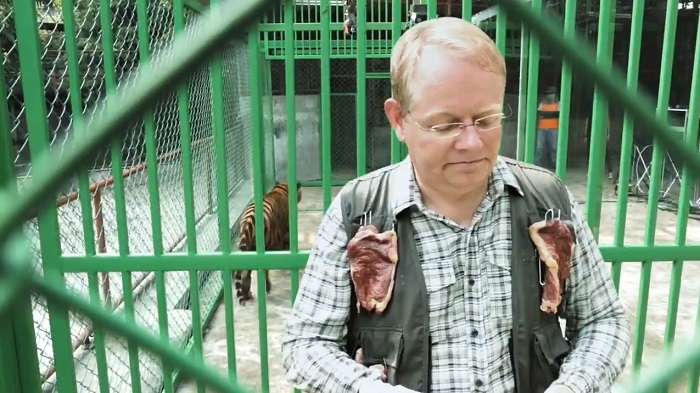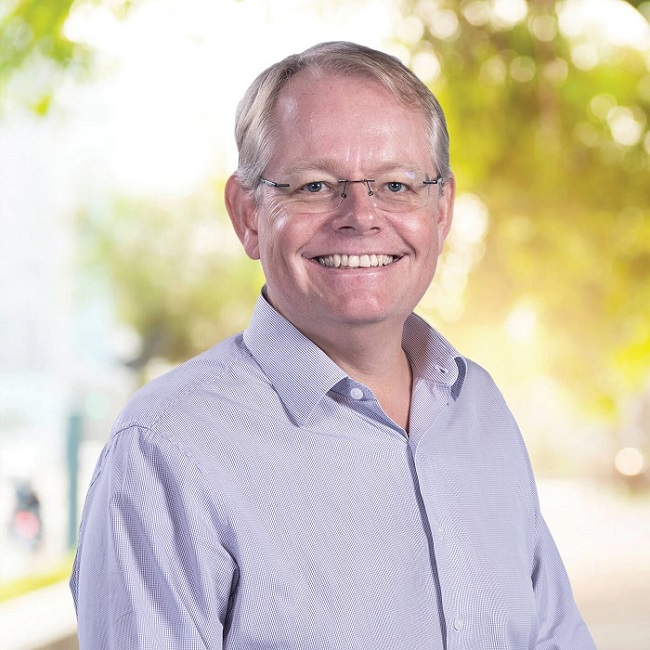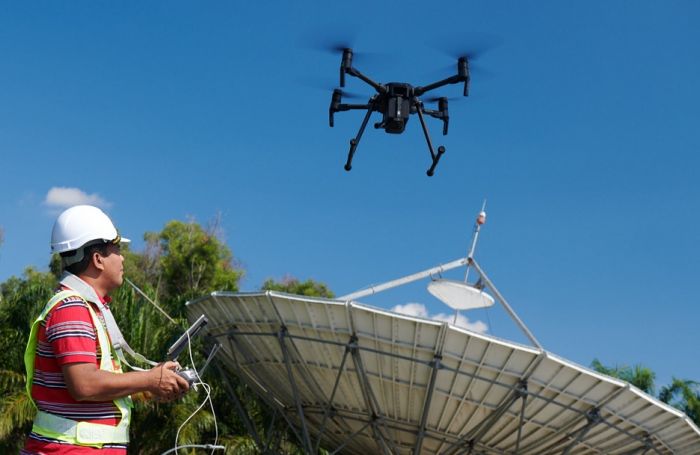Outgoing CTIO says Maxis has & continues to lead with digitalization
By Karamjit Singh December 24, 2020
- Morten Bangsgaard leaves his mark at Maxis, willing to bet life on the network
- At heart of tech transformation are digital capabilities & 3 centres of excellence

Speak to telco players in Malaysia, especially the technologists and they will acknowledge the outstanding role Morten Bangsgaard, the outgoing Chief Technology & Information Officer, Maxis Bhd has played in his over six years with the company.
Some recall the risk he was willing to take when Maxis first demonstrated its newly upgraded 4G network in Dec 2014. The company which prides itself on having the best quality network in the country had been receiving customer complaints on the degradation of its service quality for months prior and took action to upgrade.
 “I’m willing to bet my life on it,” he said in two demonstrations of the new network quality and speed. In one demonstration he was a split second away from being an extra tasty breakfast for a tiger. (apparently, his relief at the end was palpable.)
“I’m willing to bet my life on it,” he said in two demonstrations of the new network quality and speed. In one demonstration he was a split second away from being an extra tasty breakfast for a tiger. (apparently, his relief at the end was palpable.)
When not performing his own stunts, Morten’s value to Maxis was evident when the company added the innovation portfolio to his role and he became the chief technology and innovation officer.
This interview was done before the Dec 1st announcement of his departure from Maxis on Dec 31st.
I am running it almost in full due to the rich information shared by Morten, especially around his 5G approach. While the Malaysian government has pushed the rollout of 5G back to 2022, Maxis is seen by analysts and acknowledged by its competitors as being the most ready for 5G, and that was the focus of DNA’s questions to Morten.
Among the points Morten shared was Maxis’ opinion on the initial consortium approach the previous Malaysian government was focused on.
Pointing out that no country had been able to execute on a single consortium approach to rolling out its telco infrastructure, with most having three to four players to offer competitive services to the market, he states: “We are therefore of the view that one consortia with one network will not serve Malaysia’s national policy and agenda and will be difficult to manage with multiple consortia member’s agendas.”
Digital News Asia Q1: Notwithstanding the government's delay in handing out 5G spectrum, one of the major challenges is that there are so many operators vying for 5G spectra. With so many bidding for it, each operator could end up with less-than-ideal bandwidth blocks, such as less than the optimum 80MHz to 100MHz. Can you give us some specifics in the way you plan to address this scenario where you will have to use your existing band to complement 3.5GHz?
There is no doubt that the prospects of 5G is exciting, and the impact that it will have on our lives has been much talked about globally.
In fact, 5G-enabled smartphones are already in the global market and will become increasingly more affordable. 5G devices are forecast to reach over 50% in market share by 2023, overtaking 4G shipments. Globally, 5G mobile subscriptions are forecast to exceed 2.7 billion by 2025, according to Statista.
Similarly for Maxis, we are excited at the potential of 5G. But it is important that there is a lot of efficiency when it comes to rolling out 5G, which is why we have been collaborating with the industry to explore network and infrastructure sharing. This provides the opportunity for us to leverage each other’s resources and enable wider and more efficient rollout when spectrum is made available, and ultimately deliver more value to our customers.
It is also important that service providers have sufficient spectrum to bring all the benefits that 5G has to offer for end users. To deliver services with 5G’s highly-reliable, ultra-low latency and gigabit connectivity, spectrum needs to include low, mid, and high-band spectrum. This was a recommendation in the GSMA Report: 5G Implementation Guidelines: SA Option 2.
We will nonetheless adopt a pragmatic approach. If we decide to implement a non-standalone 5G network architecture, some of our 4G spectrum will be needed as an anchor band. And as 5G demand grows we may consider re-farming more of our spectrum currently utilized for 4G.
While we continue to educate the public on the potential of 5G and its capabilities through multiple 5G use cases, we are fully committed to the Government’s Jendela action plan. Jendela is a shared aspiration for the whole country, where as an industry we will be working together with the regulator and other agencies at the federal, state, and local council levels, towards providing seamless digital connectivity for all Malaysians in line with the country’s digital economy.
Jendela has high aspirations for mobile speeds and it is critical for 5G spectrum to be sufficiently available for operators with a proven track record to deliver this.
Q2: What are your thoughts on SA versus non-SA 5G and which is more suited for Maxis?
We believe both SA and non-SA 5G have their advantages. A non-SA implementation provides a faster time to market as operators with an existing 4G mobile network can utilize its existing core network.
A SA network provides additional functionality such as network slicing where logical networks can be provisioned to meet different services or users’ requirements especially for enterprises.

Q3: Vendors have been selling equipment that is claimed to be 5G ready since at least 2016. What % of your network is thus 5G ready and how much does this save you as you build out your 5G network.
We are not able to disclose details on cost savings nor specifics on network readiness but suffice to say, Maxis has been a committed player in 5G acceleration and readiness.
We have long started our 5G journey and for the last few years, have been upgrading our core network and, where needed, replacing many microwave connections in the radio access network with fibre. This will benefit existing 4G users and makes Maxis more 5G future proof.
We will also continue to prepare with the necessary investments – we have the most number of BTS sites with direct fibre and hence are well positioned to accelerate 5G deployment upon spectrum availability.
In line with Jendela, we will continue to deliver widespread 4G coverage and consistent quality of experience, which will prime for the eventual adoption of 5G.
Q4: Your CEO has said that Maxis is ready now for 5G. Can you elaborate on what that means from the network side and also the software side viz-a-viz your OSS & BSS. One study reveals that over 70% of operators believe successful 5G monetization will depend on transforming their OSS/BSS.
Digitalisation is an important part of not just our network evolution, but our entire business to ensure that we are ready for the future.
We have long started our digitalisation journey, and have been continuously transforming our OSS and BSS to be agile as we deliver new digital solutions for our network.
At the heart of our technology transformation are digital capabilities. We have invested in more business IT solutions and have developed Agile IT foundations through three Centres of Excellence to enhance our digital, big data and cloud capabilities. These will enable faster time to market of new innovative products and solutions for our customers, and an unmatched personalised experience through better interaction, personalisation and channel digitalisation.
Maxis has and continues to lead with digitalization of processes and relevant platforms to support 5G implementation, including those within OSS and BSS. This includes online mobile apps to allow for customer self-service.
Q5: Can you talk us through what will go into getting the Klang Valley 5G ready for Maxis? And how much this will cost? And, noting your recent MOU with Celcom, how will network sharing play into this?
Successful collaborations or partnerships, such as RAN Sharing and joint venture mostly between two operators, are driven by market needs.
Network sharing presents an opportunity for us to deliver more value to our customers, and industry collaboration is important in supporting Malaysia’s ambition in driving the digital economy. It brings about significant cost savings and creates overall efficiency for both parties which will result in a faster roll out and better experience of 5G for consumers and businesses in the near future.
Our MoU with Celcom announced earlier was to explore co-working in these areas and to share investment in infrastructure. We are still looking at ways to make it technically and commercially viable.
Q6: The original plan of infrastructure sharing via the consortium idea proposed by the previous administration had its merits, so as to avoid de-duplication. How do you see this going forward given that the current government is not adopting a consortium model?
Historically, there has been no clear success story for a single consortium to roll out 5G for a country, even in the 4G days. Studies have shown that having one network via one consortia has not been done anywhere in the world to date and that at least two networks are required for competition, diversity and even cyber-security resilience.
A single consortium with many parties will have many limitations – from lower speeds, low efficiency, further loss of innovation as a result of lack of infrastructure-based competition. Due to the potential conflict of interest, there is also the risk of a slow decision-making process. Importantly, a single network will essentially translate into a single point of failure should there be a major outage, and that would be catastrophic.
In many larger markets, we see mostly 3-4 operators providing competitive products and solutions to consumers. For example, commercially-driven 4G networking sharing works in Nordic countries, who continue to maintain infra based competition. We think that any consolidation will be driven by long term sustainability and market environment.
We are therefore of the view that one consortia with one network will not serve Malaysia’s national policy and agenda and will be difficult to manage with multiple consortia member’s agendas.
This is why the focus of late is on collaboration on a market driven basis and we think that the industry will continue to find new ways to collaborate as we have already been working together for some time. We are already sharing towers, fiber and working together on connectivity for rural areas. This helps us save resources and accelerate rollout. Our MoU with Celcom to explore 5G network infrastructure sharing is an example of these efforts.
Q7: O2 in the UK has said that 5G will help the UK reduce its carbon emissions. This is not something we are hearing from local players yet. For Maxis at least, what are the green aspects of 5G, even as your network will see an explosion of small cell deployment.
We are continuously looking into how we can mitigate our impact on the environment, and our key priorities have improved our energy efficiency and reduced greenhouse gas emissions across our network.
Recently, Maxis was awarded the ‘First Off-Grid Telecommunications Tower Powered by Green Energy (Solar and Wind Turbine)’ certification by the Malaysian Book of Records, for the first fully green energy telecommunications tower that runs solely on solar and wind energy.
However, despite all these energy saving measures, a 5G network will likely increase energy usage by operators. Telecoms operators are already one of the largest consumers of electricity in the country. That’s why electricity tariffs for telecom operators should be classified as industrial in Malaysia to cap a dramatic increase in energy cost so 5G can continue to benefit the industrial and manufacturing sectors.
Nonetheless, on a wider vista, 5G will bring significant efficiency gains to adopters of this technology. For example, in the manufacturing sector, adoption of 5G-related IoT and automation will help lead to improved processes and productivity gains that can lead to reduced energy consumption. Likewise, adoption of 5G technology in other industries can ultimately lead to lower energy overall for the country.
Q8: From a business model point of view, 5G adoption is to be pushed by enterprises. But recently, some have argued that the push towards enterprise has been somewhat waning and the fallback seems to be to consumers. What is your view?
No doubt, the benefits of 5G for consumers are enormous. With 5G supported handsets, you would have faster download speeds, higher resolution video – 4K and higher and in future, AR and VR capabilities for a more immersive experience, cloud gaming and Smart Homes applications.
With consumer 5G, data cost will decline sharply, enabling higher-density content (video, games, music) and new applications will emerge.
While consumer 5G is evolutionary, Enterprise 5G will be revolutionary. It will reshape the way companies do business in this Industry 4.0 era, create opportunities from optimising service delivery to enhancing IoT. During the Macquarie, Bursa: Invest Malaysia 2020 Conference a few months ago, it was estimated that 5G-based enterprise services are expected to unlock US$13 trillion (RM52.8 trillion) in economic value by 2035.
Maxis still actively engages with our Enterprise customers to co-create use cases for 5G. Technologies like 5G and 5G-enabled smart solutions have the potential to open up new possibilities for government, state councils and businesses in the areas of education, agriculture, utilities and Smart Cities, among many others. Furthermore, both 4G and 5G can provide fixed wireless access via dongles, so this could benefit SMEs in underserved urban and rural areas.
We have also been participating in every opportunity to create greater awareness on 5G and its potential. These include MCMC’s #5GMalaysia showcase in Putrajaya and IDECS Sarawak in 2019, where we showcased 5G-enabled IoT applications via smart water and electric meters, smart lighting, smart campus, smart vehicle management, and public safety solutions. These use cases demonstrate how 5G can enable Government and Enterprises to make informed decisions using the technology.
In January 2020, as part of the 5G Demonstration Projects, Maxis featured its 5G use case in both education and agriculture, and continue to do so through various events and platforms.
For education, we demonstrated our virtual reality (VR) experience use case for Science learning in eKelas, Maxis’ flagship community programme which champions digital learning for students in rural areas. Powered by 5G, VR learning makes a compelling use case where the curriculum was brought to life by letting students to virtually explore the different parts of the human body or animal cells using their hands, all guided by a teacher remotely. Given its immersive properties, students learn in an experiential way that helps with their understanding and retention of the topic learnt.
The VR experience is a clear example of the immense possibilities of what technology can do for education, and we believe that 5G has great potential for eKelas to be a catalyst to advance education in Malaysia. We want to reach out to and connect with more schools with our digital learning content.
The eKelas VR use case is a great opportunity for students to explore new technologies in learning and has received very positive response. We are really seeing the impact of connectivity through the programme.
Maxis eKelas has grown tremendously since launching 5 years ago, with more than 20,000 students now connecting with the programme through the eKelas portal. We recognise the importance of digital inclusion, and want to do our part in ensuring that the benefits of technology are realized by all.
Maxis also signed an MoU with CENTEXS Sarawak to launch the first 5G testbed in the state of Sarawak, and more recently, signed an MoU with the Penang State Government to be the State’s trusted technology partner. This will enable us to lend our capabilities and 5G-enabled IoT solutions in the areas of Smart Education, Smart Security and Smart Agriculture. During the event, we also showcased our eKelas VR use case at the Penang Digital Library.


